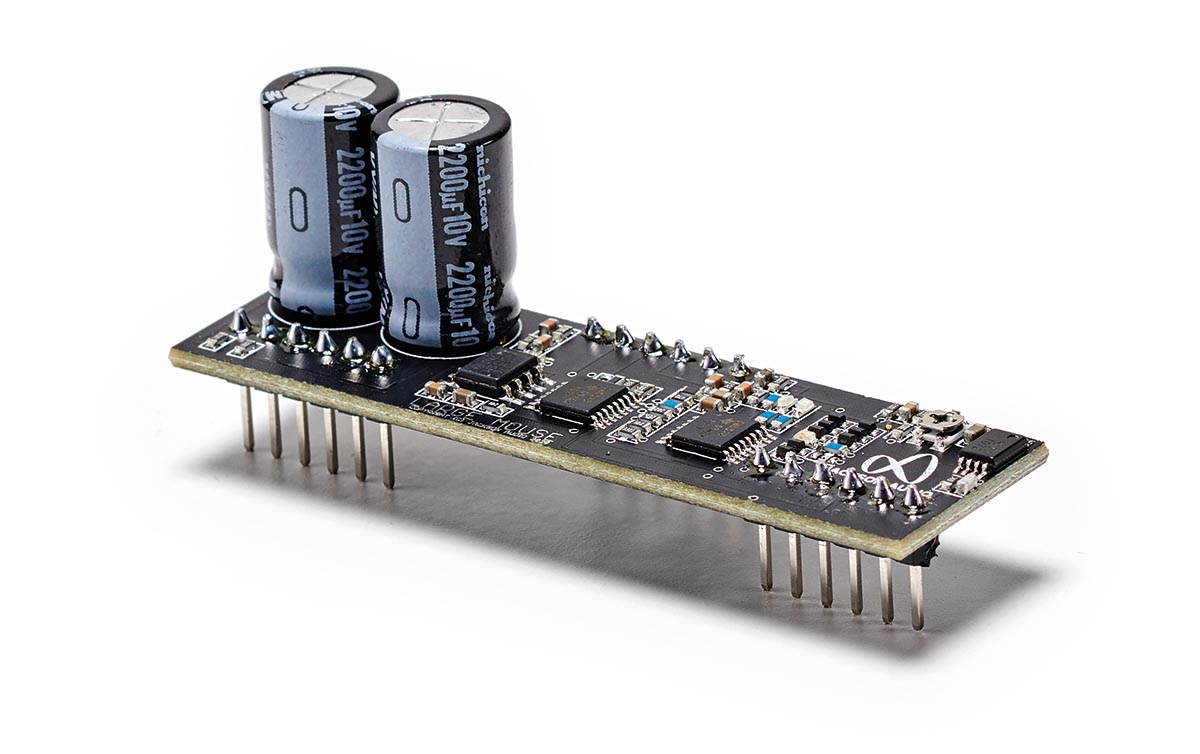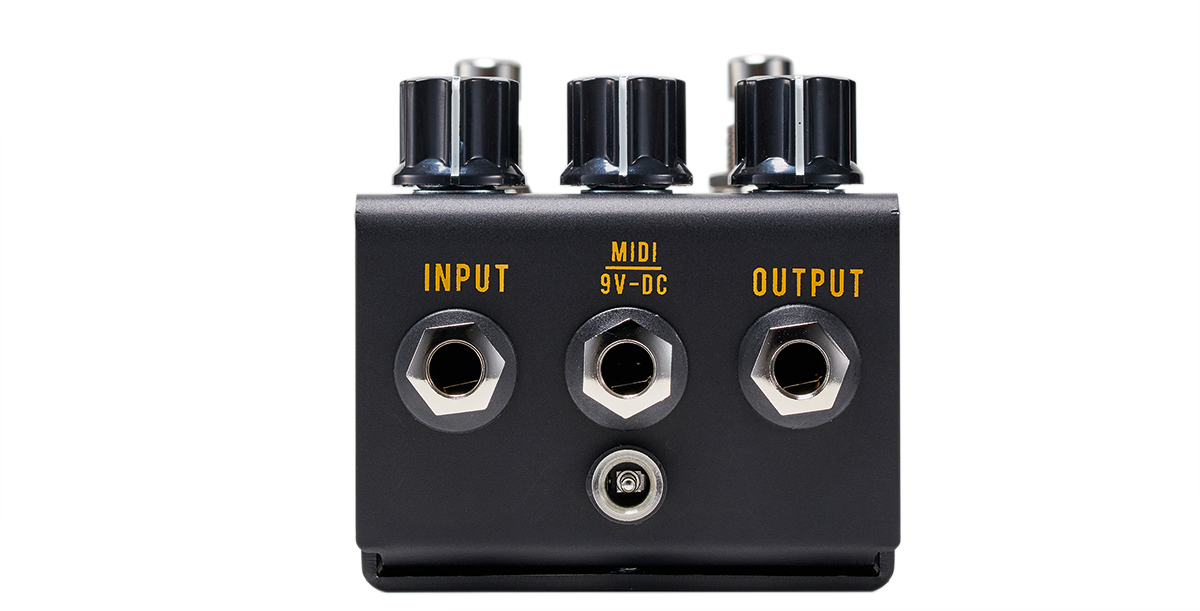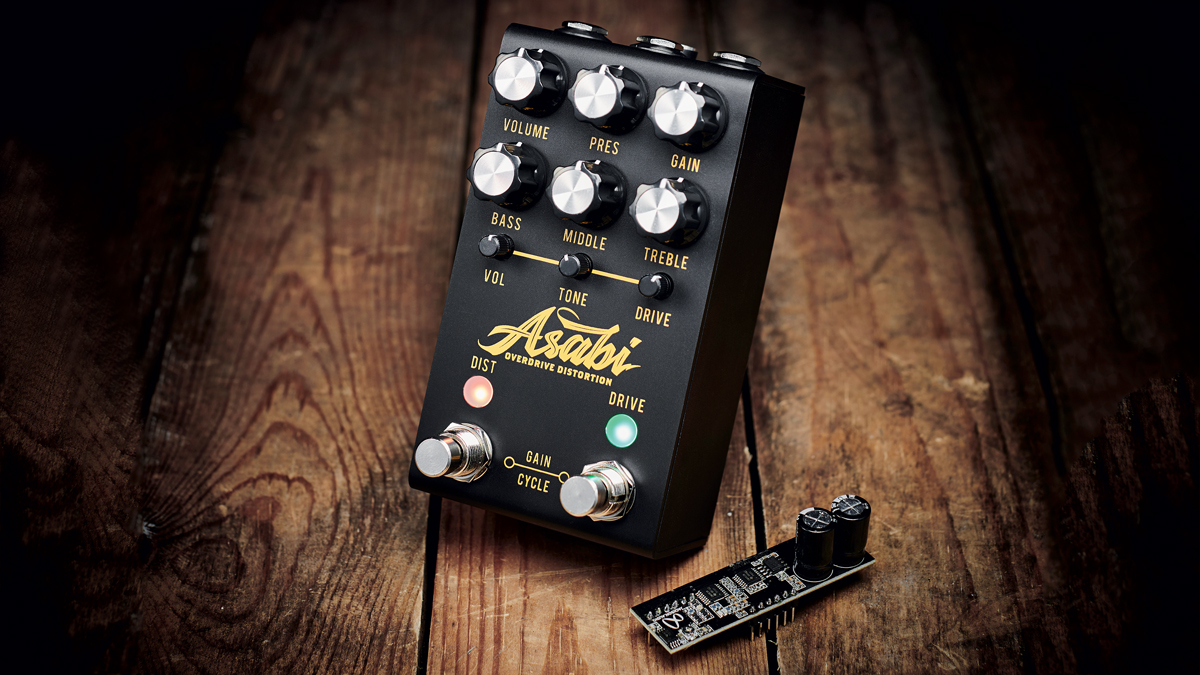Guitar World Verdict
Independent overdrive and distortion that combine brilliantly make this a very flexible pedal anyway, but interchangeable circuit boards will maintain that flexibility into the future. One to watch.
Pros
- +
Independently switchable distortion and overdrive in one compact pedal.
- +
Four overdrive options.
- +
Futureproof modular design.
Cons
- -
Slight switching lag.
You can trust Guitar World
Jackson Audio has introduced the Asabi, a signature pedal for LA-based Brazilian virtuoso Mateus Asato, and it has some really interesting features.
Basically, it pairs separate overdrive and distortion circuits in one chassis but the distortion circuit is interchangeable: you can simply remove the circuit board and replace it with another, something Jackson believes makes the pedal futureproof.
The overdrive in the pedal is also flexible, featuring four different presets of clipping diodes that can actually be selected by some nifty footswitching, and you can also use the footswitches for on-the-fly adjustments of the distortion gain.
Sounds
The pedal’s six larger knobs are dedicated to its high-gain, hard-clipping Modern High Gain distortion circuit. Bass, Middle and Treble knobs offer EQ tweaks like an amp’s front panel, but it’s the Presence knob that has the most influence over the distortion’s tonal profile, focusing its cutting edge.
The pedal is pretty much in the Marshall-in-a-box vein with the included circuit board, offering up the sort of throaty Brit crunch through to saturated lead tone that you might expect from a JCM800
The pedal is pretty much in the Marshall-in-a-box vein with the included circuit board, offering up the sort of throaty Brit crunch through to saturated lead tone that you might expect from a JCM800 – all given a healthy push if you use the Drive side of the pedal with it. That Drive side is designed for transparent flat response and has standard Volume and Drive knobs plus a brightness-adjusting Tone knob.
Drive character is determined by your choice of clipping diodes that are selected by holding down the Distortion footswitch for more than a second and then tapping it to scroll through them. Each is indicated by a different Drive LED colour and you can audition the changes in sound and feel as long as the Drive is engaged.
The choices are two LEDs, complementing the Marshall flavour, two symmetrical silicon diodes for a Tube Screamer-style drive with compression, three asymmetric diodes for a little more aggression, and four symmetric silicon diodes delivering a more transparent drive.

Cleverly, Jackson has included level-matching circuitry so your volume level will remain constant when stepping through the four options, not just making comparison easier but also eliminating any nasty surprises should you wish to use the function on stage.
The idea of interchangeable circuit boards in a dirt pedal is not a new one (the Foxrox ZIM and its array of ZIMcards has been around for years), but Jackson has claimed that the Asabi is the world’s first pedal to feature “analog distortion plug-ins”.
These are completely analogue circuit boards that contain all the op-amps, transistors, diodes, resistors and capacitors that make up a distortion circuit, and the first one available for the Asabi is the Large Mouse, based on a certain pedal that thankfully isn’t made by Roland.
Installing it requires loosening the three screws that hold the two parts of the chassis together, pulling out the installed board and pressing in the new one – it’s a pretty simple two-minute job.

A/B’d side by side with our original 1980s ProCo RAT, the Asabi/Large Mouse was very much in the same ballpark but couldn’t quite capture the full-on thick distortion of a maxed-out RAT without a little help. At full gain it pretty much nailed the sound of the RAT set at about two-thirds distortion, but required the Drive side to be kicked in as well to get to maximum RAT distortion.
With the various drive options, though, and an EQ knob array offering more potential tonal tweaking than the original’s single Filter, the pedal can offer a wider range of variations of the basic flavour.
Should you want to change the gain levels on stage there’s a unique Gain Cycle function where you set the Gain knob at the maximum level you want and the pedal divides that into four recallable settings (25, 50, 75 and 100 per cent indicated by the brightness of the Dist LED). You simply scroll through these with a press on both footswitches at once.
It’s useful if you want to kick in more gain at different stages in a song, but it only scrolls in one direction so you may have to be careful not to go from maximum gain to 25 per cent by mistake. MIDI control is available over many aspects of the pedal including the clipping presets and Gain Cycle options.

Specs
- PRICE: £349 plus £49 / $349 plus $49
- ORIGIN: USA
- TYPE: Overdrive/distortion pedal
- FEATURES: True bypass, plug-in alternative circuit boards
- CONTROLS: Volume, Presence, Gain, Bass, Middle, Treble, Overdrive Volume, Overdrive Tone, Overdrive Drive, Distortion footswitch, Drive footswitch
- CONNECTIONS: Standard input, standard output, MIDI
- POWER: 9V DC adaptor – pedal requires 120mA minimum
- DIMENSIONS: 67 (w) x 124 (d) x 70mm (h)
- CONTACT: Jackson Audio
Trevor Curwen has played guitar for several decades – he's also mimed it on the UK's Top of the Pops. Much of his working life, though, has been spent behind the mixing desk, during which time he has built up a solid collection of the guitars, amps and pedals needed to cover just about any studio session. He writes pedal reviews for Guitarist and has contributed to Total Guitar, MusicRadar and Future Music among others.
“The original Jordan Boss Tone was probably used by four out of five garage bands in the late ’60s”: Unpacking the gnarly magic of the Jordan Boss Tone – an actual guitar plug-in that delivers Dan Auerbach-approved fuzz
“This is a powerhouse of a stompbox that manages to keep things simple while offering endless inspiration”: Strymon EC-1 Single Head dTape Echo pedal review












